#EpithetErasedPosts
Explore tagged Tumblr posts
Text

Analysis of the Banzai Blasters (Epithet Erased)
The Banzai Blasters are a criminal organization in Epithet Erased, primarily operating in Sweet Jazz City. Characterized by their comedic incompetence, pyramid scheme structure, and Team Rocket-inspired aesthetic, they serve as a foil to the more serious Bliss Ocean. This analysis explores their ideology, structure, membership, goals, methods, narrative role, and thematic significance, drawing from the provided document.
Ideology and Motivation
Core Belief: The Banzai Blasters lack a unified ideological goal beyond personal gain and petty crime. Their activities revolve around small-scale heists, vandalism, and scams, driven by a desire for power, status, or profit within their pyramid scheme structure.
Motivation: The organization appeals to "teenage delinquents and disenfranchised divorcees," suggesting it preys on individuals seeking belonging or quick rewards. Members are motivated by the promise of rank advancement, which grants customization privileges and status, as seen in the "And Your Reward Is Clothes" trope.
Hypocrisy: While not explicitly ideological, their pyramid scheme model is inherently exploitative, requiring members to pay $49.99 a month (plus tax) to join as Blasters, with little regard for low-ranking members who stop paying. This reflects a lack of loyalty to their own, as higher ranks prioritize personal advancement over group cohesion.
Narrative Framing: The Banzai Blasters are portrayed as bumbling, comical villains, embodying the "Goldfish Poop Gang" trope. Their incompetence contrasts with their self-perception as "Great at Crime" (as per their image song), making them a humorous counterpoint to the more threatening Bliss Ocean.
Membership and Structure
Composition: The Banzai Blasters have a large but disorganized membership, consisting of both epithet users (e.g., Bugsy Pugsler, Arnold Markdown) and mundies (non-powered individuals). Most members are low-ranking "Blasters," depicted as faceless goons in generic uniforms with helmets, which they cannot remove until they rank up.
Key Members:
Bugsy Pugsler (Vice Principal): Epithet "Bellybutton," a random-effect power based on consuming food (e.g., spitting ice or soup-based attacks). He’s greedy, smug, and physically strong (4-star stamina) but lacks creativity and skill, making his epithet inconsistent. Voiced by Heath Morrow.
Arnold Markdown (Vice Principal): Epithet "Coupon," a support power that buffs allies or weakens enemies via coupons (e.g., "2 for 1" to replicate attacks). He’s weak in direct combat (1-star stamina) but skilled in strategy (high creativity/proficiency). Voiced by Oliver Tull.
The Banzai Jennifers (Blasters): A trio of female Blasters (Jenny, Jen, Niffer) inspired by Heathers, with color-coded motifs (Red, Green, Yellow). They’re mooks with Valley Girl accents and feminine uniform tweaks (skirts, bows). Voiced by Meg McClain, Lindsay Sheppard, and Sarah Wiedenheft.
Giovanni Potage (Former Captain): An epithet user who led a team of Blasters, known for creative but silly missions (e.g., replacing hot dogs with cattails). His leadership earned him the nickname "Boss" before he left to form his own group.
Other Notable Members: Flamethrower, Car Crash, Spike, Ben, Crusher, Dark Star (all former Blasters under Giovanni), and DC Bell (Valedictorian, details sparse).
Banzai Baron: The elusive leader, mentioned but not detailed, suggesting a distant or symbolic role.
Structure: The Banzai Blasters operate as a pyramid scheme with a convoluted rank system: Blaster, Captain, Vice Principal, Associate Justice, Valedictorian, Senpai, and Baron. Advancement allows uniform customization (e.g., Giovanni’s cape, Bugsy/Arnold’s cartoon gloves). Vice Principals work in pairs to encourage infighting, with only one eligible for promotion, fostering internal rivalry. The organization’s large presence in Sweet Jazz City is undermined by poor coordination and ineffective members.
Goals and Methods
Goals: The Banzai Blasters aim to maintain their criminal influence in Sweet Jazz City through petty crimes, such as theft (e.g., the Arsene Amulet) and vandalism. Their pursuit of the amulet suggests an interest in powerful artifacts, though their motives are likely self-serving rather than ideological.
Methods:
Zerg Rush Tactics: They rely on numbers, as seen when Bugsy and Arnold’s team dogpiles Giovanni to steal the Arsene Amulet. However, their lack of skill makes this ineffective against stronger opponents like Percy.
Petty Crime: Missions include trivial acts like stealing items for show-and-tell or sabotaging gas stations, reflecting their lack of ambition.
Pyramid Scheme: Membership requires monthly payments, with higher ranks reaping benefits while low-ranking Blasters are treated as disposable. The organization doesn’t pursue defectors unless they’re high-ranking, indicating a focus on profit over loyalty.
Epithet Use: Members like Bugsy and Arnold use epithets for combat or support, though their powers (e.g., Bellybutton’s randomness, Coupon’s conditional buffs) are often underwhelming or poorly utilized.
Outcome: The Banzai Blasters consistently fail in their major endeavors. In the "Museum Arc" and "Western Arc," they’re defeated by characters like Percy, Ramsey, and Howie Honeyglow, with Giovanni’s team defecting to form a new group. Their attempt to steal the Arsene Amulet is thwarted, and key members like Bugsy are humiliated (e.g., Zora de-aging him into a baby).
Leadership
Banzai Baron: The supposed leader, but no details are provided beyond their title, suggesting they’re either a figurehead or operate behind the scenes. Their absence contrasts with the hands-on leadership of figures like Giovanni.
Bugsy and Arnold (Vice Principals): As high-ranking members, they lead teams but are ineffective due to their egos and weak epithets. Bugsy’s arrogance and Arnold’s reliance on coupons make them vulnerable, as seen in their defeats by Giovanni, Ramsey, and Zora. Their paired structure, designed to spark infighting, highlights the organization’s dysfunctional leadership model.
Giovanni Potage (Former Captain): A charismatic leader who inspired loyalty in his team, Giovanni’s departure underscores the organization’s inability to retain talent. His creative missions, while silly, show more initiative than the typical Blaster.
Narrative Role and Themes
Role: The Banzai Blasters are recurring antagonists in Epithet Erased, appearing in the "Museum Arc" and "Western Arc." They serve as comic relief and a foil to Bliss Ocean, highlighting the latter’s competence and menace. Their incompetence makes them a non-lethal threat, easily dispatched by protagonists like Percy or Howie, but their persistence adds humor and chaos to the plot.
Themes:
Ineptitude vs. Ambition: The Blasters’ grandiose self-image (e.g., "Great at Crime") clashes with their constant failures, poking fun at overconfident villains.
Exploitation and Hierarchy: The pyramid scheme structure critiques exploitative systems, with low-ranking members treated as disposable while higher ranks hoard benefits.
Team Rocket Influence: Inspired by Team Rocket, the Blasters’ pink-haired grunts, silly antics, and disorganized crime mirror Pokémon’s comedic villains, adding a nostalgic, lighthearted tone.
Redemption and Defection: Giovanni’s arc, leaving the Blasters to form his own group, suggests potential for growth beyond the organization’s toxic structure.
Resolution: The Blasters remain active but diminished, with Giovanni’s team defecting and key members like Bugsy humiliated. Their ongoing presence suggests future comedic conflicts, but their lack of competence limits their narrative weight.
Strengths and Weaknesses
Strengths:
Numbers: Their large membership allows for tactics like dogpiling, though this rarely succeeds.
Epithet Synergy: Bugsy and Arnold’s powers complement each other (e.g., Coupon’s buffs enhancing Bellybutton’s attacks), showing potential when coordinated.
Cultural Presence: Their visibility in Sweet Jazz City and catchy image song give them a memorable identity despite their failures.
Weaknesses:
Incompetence: Most members, even Vice Principals, are easily defeated, with low skill and poor epithet mastery (e.g., Bugsy’s random attacks).
Disorganization: Internal rivalries and a convoluted rank system undermine their effectiveness.
Weak Epithets: Powers like Bellybutton and Coupon are situational or underwhelming, limiting their threat level.
Exploitative Structure: The pyramid scheme alienates members, leading to defections like Giovanni’s.
Notable Interactions
With Bliss Ocean: The Blasters are a foil to Bliss Ocean, lacking the latter’s focus and menace. Zora’s interaction with Bugsy (de-aging him for whining) underscores Bliss Ocean’s superiority, as even a single Bliss Ocean member outclasses a Blaster Vice Principal.
With Protagonists: Characters like Percy, Ramsey, and Howie easily defeat Blasters, highlighting their ineffectiveness. Giovanni’s leadership and eventual defection show a contrast between individual potential and the organization’s stagnation.
Past Atrocities: Despite their comedic portrayal, the Blasters are responsible for serious crimes, such as murdering Zora’s parents over gold, hinting at a darker side that’s rarely shown.
Conclusion
The Banzai Blasters are a comedic, disorganized criminal group in Epithet Erased, defined by their pyramid scheme structure, Team Rocket-inspired antics, and general incompetence. Their lack of ideological depth, reliance on weak epithets, and exploitative hierarchy make them a humorous but ineffective foil to Bliss Ocean. While they contribute to the series’ lighthearted tone, their occasional darker actions (e.g., Zora’s parents) suggest untapped potential for menace. Their persistence despite constant failures ensures they remain a source of chaotic, comedic conflict in Sweet Jazz City.
#epithet erased#zora salazar#bliss ocean#Epithet Erased comments#mha#erased#epithet#epitphet erased posts#epithet erased comments#theroies epithet#EpithetErased#ZoraSalazar#BlissOcean#EpithetErasedComments#MyHeroAcademia#EpithetErasedFan#EpithetErasedPosts#EpithetErasedFandom#EpithetErasedTheories#EpithetErasedAnalysis#EpithetErasedMeta#ZoraFan#BlissOceanVibes#EpithetErasedVillains#EpithetErasedAntagonists#EpithetErasedFanart#EpithetErasedCommunity#JelloApocalypse#EpithetErasedTheory#MHAxEpithetErased
12 notes
·
View notes
Text

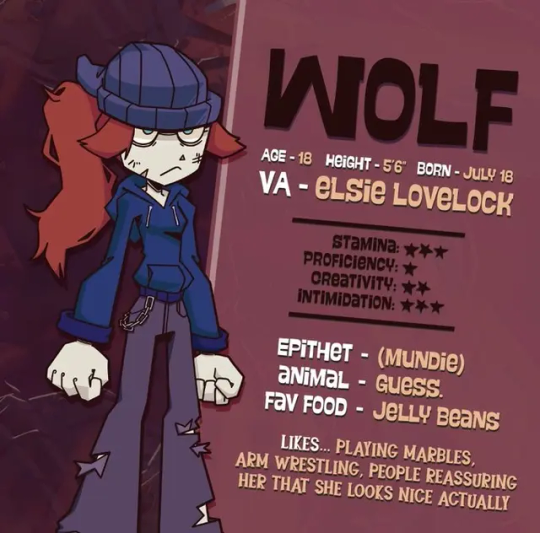
Analysis of Lone Villains in Epithet Erased
In Epithet Erased, lone villains operate independently from major factions like the Banzai Blasters or Bliss Ocean, driven by personal motives rather than organizational loyalty. This analysis focuses on two prominent lone villains, Mera Salamin and Indus Tarbella, based on the provided document. It explores their motivations, abilities, relationships, narrative roles, and thematic significance in the context of Sweet Jazz City.
Mera Salamin
Overview
Name: Mera Salamin
Epithet: Fragile
Voiced by: Lindsay Sheppard
Age: 26
Affiliation: Formerly Sweet Jazz City Museum (as a tour guide/security guard, undercover)
Stats: Stamina (1), Proficiency (5), Creativity (5)
Ideology and Motivation
Core Motivation: Mera’s primary drive is to escape the constant pain caused by her epithet, Fragile, which weakens her body to the point of extreme frailty. She seeks the Arsene Amulet to steal an epithet (initially Sylvester Ashling’s Drowsy, later Molly Blyndeff’s Dumb) to mitigate her suffering.
Moral Complexity: Mera is a tragic villain, willing to manipulate, harm, or kill to achieve her goal, yet her actions stem from desperation rather than malice. Her refusal to relinquish her own epithet, despite its drawbacks, reflects a sunk cost fallacy—she’s spent years mastering it and believes it defines her strength.
Hypocrisy: Mera justifies stealing another’s epithet to end her pain but refuses to give up her own, viewing it as integral to her identity. This contradiction highlights her complex relationship with her power and her unwillingness to sacrifice her agency.
Abilities
Epithet: Fragile: Mera can weaken objects or people to their breaking point, creating glass-like structures (spikes, walls, skates) or shattering barriers. However, this power involuntarily affects her, causing constant pain and fragility (e.g., breaking her foot from stubbing a toe).
Key Techniques:
Scattergun: Combines with Indus’ Barrier epithet to break his barriers into shards and launch them telekinetically.
Crystal Generation: Summons glass spikes or weapons for attack or defense.
Watch Your Step: Creates crystalline skates for rapid movement, wielding a crystal spear.
Stamina Absorption: Drains stamina from others to heal herself, weakening opponents to her level of frailty.
Former Ability: Briefly stole Sylvester’s Drowsy epithet, allowing her to use Nightmare Fuel, though it was returned by Molly.
Weaknesses: Mera is a Glass Cannon—her epithet is powerful, but her low stamina (1) makes her vulnerable to injury. Her reliance on stamina absorption to manage pain ties her combat effectiveness to others’ vitality.
Membership and Structure
Lone Operator: Mera works independently, unaffiliated with groups like the Banzai Blasters or Bliss Ocean. Her only consistent ally is Indus Tarbella, her loyal bodyguard, whom she manipulates but also relies on.
Dynamic with Indus: Mera bested Indus in a duel, earning his loyalty. She exploits his strength and naivety, assigning him menial tasks (e.g., laundry, taxes) under the guise of “training.” Despite her harsh demeanor, subtle hints (e.g., her flustered reaction to his shirtless flexing) suggest a complex attachment.
Goals and Methods
Goal: Steal the Arsene Amulet to acquire an epithet that negates her pain, initially targeting Sylvester’s Drowsy and later Molly’s Dumb for its pain-dulling potential.
Methods:
Deception: Posed as a museum tour guide to infiltrate Sweet Jazz City Museum and plan the heist.
Manipulation: Tricked Sylvester into aiding her by promising access to the amulet, and uses Indus’ loyalty to handle physical confrontations.
Combat: Relies on her epithet’s offensive capabilities (e.g., Scattergun, glass weapons) and Indus’ barriers for defense. Her stamina absorption allows her to sustain fights by draining opponents.
Outcome: Mera’s heist fails due to Molly and Giovanni’s interference. She briefly steals Sylvester’s epithet but is defeated, arrested by the Sweet Jazz Police Department, and removed from the story post-Museum Arc.
Narrative Role and Themes
Role: Mera is the Disc-One Final Boss of the Museum Arc, a formidable but sympathetic antagonist whose defeat marks the midpoint of Season 1. Her actions drive the arc’s conflict, pitting her against Molly, Giovanni, and Sylvester.
Thematic Significance:
Tragic Villainy: Mera’s pain and desperation humanize her, contrasting her ruthless methods with her sympathetic motives. Her epithet’s constant agony mirrors a chronic illness, adding depth to her character.
Sunk Cost Fallacy: Her refusal to abandon her epithet, despite its harm, reflects a fear of losing her identity and years of effort.
Tsundere Dynamics: Her harsh exterior softens slightly with Indus and Molly, showing potential for redemption, as seen in her reluctant gratitude toward Molly for numbing her pain.
Resolution: Mera’s arrest alongside Indus concludes her role in the Museum Arc, though her confirmed return in Sweet Escape suggests further development.
Strengths and Weaknesses
Strengths:
High proficiency and creativity (both 5) make her epithet versatile and deadly.
Strategic cunning, as seen in her museum infiltration and manipulation of Sylvester.
Synergy with Indus’ barriers enhances her offensive capabilities.
Weaknesses:
Extremely low stamina (1) due to her epithet’s drawback, making her physically frail.
Emotional volatility, as her pain fuels rash decisions and motive rants that opponents (e.g., Molly) exploit.
Reliance on Indus for physical protection limits her independence.
Notable Interactions
Indus Tarbella: Mera’s primary ally, whose loyalty she exploits but subtly reciprocates. Their Huge Guy, Tiny Girl dynamic adds humor and depth, with Indus coaxing out her kinder side.
Molly Blyndeff: Mera targets Molly’s Dumb epithet for its pain-dulling potential but underestimates her. Molly’s kindness (numbing Mera’s pain) elicits rare gratitude, hinting at Mera’s capacity for change.
Giovanni Potage: Mera views Giovanni as an inferior thief, easily subduing his team. His eventual victory over her underscores her underestimation of others.
Sylvester Ashling: Mera manipulates Sylvester but respects his epithet, briefly stealing it before losing it back to him.
Ramsey Murdoch: Minimal interaction, but they’ll team up in Sweet Escape, suggesting a future alliance.
Indus Tarbella
Overview
Name: Indus Tarbella
Epithet: Barrier
Voiced by: Anthony Sardinha
Age: 23
Affiliation: Loyal to Mera Salamin
Stats: Stamina (High, exact level unclear), Proficiency (Moderate), Creativity (Low)
Ideology and Motivation
Core Motivation: Indus is driven by loyalty to Mera, whom he serves as a bodyguard after losing a duel to her. His desire to become stronger and his admiration for Mera’s strength fuel his actions.
Personality: Indus is a Lawful Good, dim-witted, and overly courteous “Minion with an F in Evil.” His innocence and enthusiasm (e.g., excitement at dinosaur fossils) contrast with his villainous role, making him a non-threatening antagonist unless provoked.
Loyalty: His undying devotion to Mera borders on comedic, as he follows her orders unquestioningly, even when they involve menial tasks or morally dubious acts.
Abilities
Epithet: Barrier: Indus can create barriers of varying sizes, from bulletproof walls to small handheld shields. These are primarily defensive but can be used offensively (e.g., Shield Bash).
Key Techniques:
Shield Bash: Launches a large barrier forward to push opponents back, effective against weaker foes like Banzai Blasters.
Synergy with Mera: His barriers provide material for Mera’s Scattergun, enhancing her attacks.
Weaknesses: Indus’ low creativity limits his epithet’s versatility, relying on brute force and straightforward applications. His simplicity makes him easy to trick (e.g., eating bugs).
Membership and Structure
Lone Ally: Indus operates solely as Mera’s bodyguard, with no ties to larger organizations. His role is to protect Mera and execute her plans, often taking the blame for her failures (e.g., the museum heist).
Dynamic with Mera: Indus’ loyalty stems from his defeat in a duel, viewing Mera as a mentor. He performs tasks like cooking and laundry, unaware they’re not combat training. His sunny demeanor softens Mera’s harshness, as seen when he nudges her to thank Molly.
Goals and Methods
Goal: Assist Mera in stealing the Arsene Amulet, primarily by providing muscle and defensive support.
Methods:
Physical Strength: Indus’ high stamina and buff physique make him a formidable tank, shrugging off attacks (e.g., smashing a wall and walking away unscathed).
Barrier Use: Employs barriers for defense or to push back opponents, though his attacks lack sophistication.
Tour Guide Role: Infiltrates the museum alongside Mera, unintentionally revealing the amulet’s existence to Sylvester during a tour.
Outcome: Indus is arrested with Mera after the failed heist, removed from the story post-Museum Arc, but set to return in Sweet Escape.
Narrative Role and Themes
Role: Indus is a comedic foil and secondary antagonist in the Museum Arc, providing physical support for Mera’s schemes. His early capture in the arc’s finale shifts focus to more serious conflicts.
Thematic Significance:
Minion with an F in Evil: Indus’ kindness and naivety undermine his villainous role, making him a lovable oaf rather than a true threat.
Loyalty and Simplicity: His unwavering devotion to Mera and simple-mindedness highlight themes of trust and manipulation, as Mera exploits his goodwill.
Fan Service: His shirtless scenes and muscular physique add humor and appeal, appreciated by Mera and the audience.
Resolution: Indus’ arrest alongside Mera concludes his arc temporarily, but his confirmed return in Sweet Escape with Ramsey suggests further exploration of his loyalty and growth.
Strengths and Weaknesses
Strengths:
High stamina and physical strength make him nearly invulnerable in combat.
Barriers provide strong defense and synergy with Mera’s epithet.
Genuine kindness endears him to others, even opponents.
Weaknesses:
Low creativity limits his epithet’s versatility, relying on basic applications.
Naivety makes him susceptible to manipulation (by Mera) or deception (by others).
Over-reliance on Mera’s guidance leaves him directionless without her.
Notable Interactions
Mera Salamin: Indus’ loyalty defines their relationship, though Mera’s harsh treatment contrasts with his affection. He brings out her softer side, as seen in her reluctant gratitude toward Molly.
Molly Blyndeff: Indus is courteous to Molly, calling her “small girl” and showing no real hostility. Molly’s kindness toward Mera indirectly affects him, as he encourages Mera’s gratitude.
Sylvester Ashling: Indus’ simplicity confuses Sylvester, who overanalyzes his actions, assuming hidden cunning. Indus trusts Sylvester enough to let him analyze the amulet, unaware of Mera’s deception.
Ramsey Murdoch: Minimal interaction, but their team-up in Sweet Escape suggests a future dynamic.
The Wolf
Overview
Name: The Wolf
Epithet: None (Mundie)
Voiced by: Elsie Lovelock
Age: 18
Affiliation: Independent
Stats: Stamina (1, extremely low)
Ideology and Motivation
Core Motivation: The document provides limited details on The Wolf’s motives, but her status as a mundie (non-epithet user) and low stamina suggest she relies on cunning or physical skills rather than supernatural powers. Her involvement in the story is minimal, indicating a smaller-scale villainous role.
Personality: Sparse information suggests a tough, possibly abrasive demeanor, as implied by her design and interests (e.g., arm wrestling, playing marbles). Her favorite animal (wolf) and food (jelly beans) hint at a playful yet fierce persona.
Abilities
Mundie Status: Lacking an epithet, The Wolf likely depends on physical or tactical skills. Her low stamina (1) suggests she’s not suited for prolonged combat, possibly favoring quick, strategic actions.
Weaknesses: Her extremely low stamina makes her vulnerable in direct confrontations, likely requiring her to avoid prolonged fights or rely on allies.
Membership and Structure
Lone Operator: The Wolf is an independent villain, unaffiliated with groups like the Banzai Blasters or Bliss Ocean. No allies are mentioned, suggesting she operates solo or with temporary partners.
Goals and Methods
Goal: Unclear from the document, but her status as a villain implies personal gain or disruption, possibly tied to smaller-scale schemes given her limited power.
Methods: Likely relies on guile, speed, or unconventional tactics (e.g., marbles, arm wrestling) to compensate for her lack of epithet and low stamina.
Outcome: The Wolf’s role is a stub, with no detailed outcomes provided. Her absence from major arcs suggests a minor or underdeveloped character.
Narrative Role and Themes
Role: As a stub character, The Wolf’s narrative impact is minimal, likely appearing in a minor capacity or non-canon content. Her mundie status sets her apart from epithet-driven villains like Mera.
Thematic Significance:
Underdog Villain: Her lack of an epithet and low stamina position her as an underdog, potentially relying on wit to survive in a world of powered individuals.
Mid-Tier Appeal: Her “Mid” ranking in Jello’s fandom tier list suggests a likable but not standout character, possibly due to limited screen time.
Resolution: No resolution is provided, as her role remains underdeveloped.
Strengths and Weaknesses
Strengths:
Potential cunning or resourcefulness, as mundies often rely on non-epithet skills.
Playful traits (e.g., liking marbles) may endear her to others.
Weaknesses:
Extremely low stamina (1) limits her combat endurance.
Lack of an epithet puts her at a disadvantage against powered opponents.
Limited narrative presence reduces her impact.
Notable Interactions
None Specified: The document doesn’t detail interactions, suggesting The Wolf has minimal connections to major characters like Mera, Indus, or the Banzai Blasters.
Comparative Analysis
Motivations:
Mera is driven by personal suffering, making her a tragic, complex villain. Indus follows Mera out of loyalty, lacking personal ambition. The Wolf’s motives are unclear but likely less profound, given her minor role.
Abilities:
Mera’s Fragile epithet is powerful but self-destructive, contrasting with Indus’ defensive Barrier, which is simple but reliable. The Wolf’s mundie status and low stamina make her the weakest in combat, likely relying on non-epithet skills.
Narrative Impact:
Mera and Indus drive the Museum Arc’s conflict, with Mera as the mastermind and Indus as her muscle. The Wolf’s minimal presence suggests a peripheral role, possibly as a cameo or non-canon character.
Thematic Roles:
Mera embodies tragic villainy and the cost of power, Indus represents loyalty and innocence, and The Wolf (potentially) highlights the struggles of mundies in an epithet-driven world.
Interactions with Banzai Blasters
Mera and Indus: Both encounter the Banzai Blasters during the Museum Arc, easily overpowering them due to the Blasters’ incompetence. Mera subdues Giovanni’s team, while Indus’ barriers dispatch low-ranking Blasters with Shield Bash. Their independence contrasts with the Blasters’ disorganized hierarchy.
The Wolf: No direct interactions are noted, but her mundie status and low stamina suggest she’d struggle against the Blasters’ numbers, relying on cunning to evade or outwit them.
Conclusion
Mera Salamin and Indus Tarbella are compelling lone villains in Epithet Erased, with Mera’s tragic desperation and Indus’ comedic loyalty driving the Museum Arc’s narrative. Mera’s powerful but painful Fragile epithet and Indus’ durable Barrier create a dynamic duo, blending cunning and brute force. The Wolf, however, remains underdeveloped, with her mundie status and low stamina limiting her impact. Together, these villains highlight themes of personal struggle, loyalty, and the underdog’s fight in a world of epithets, contrasting sharply with the Banzai Blasters’ chaotic incompetence. Their confirmed return in Sweet Escape promises further exploration of Mera and Indus’ complex dynamics, while The Wolf’s role remains uncertain.
(To be fair Wolf was scared out of her mind by Trixie)
#epithet erased#zora salazar#bliss ocean#Epithet Erased comments#mha#erased#epithet#epitphet erased posts#epithet erased comments#theroies epithet#EpithetErased#ZoraSalazar#BlissOcean#EpithetErasedComments#MyHeroAcademia#EpithetErasedFan#EpithetErasedPosts#EpithetErasedFandom#EpithetErasedTheories#EpithetErasedAnalysis#EpithetErasedMeta#ZoraFan#BlissOceanVibes#EpithetErasedVillains#EpithetErasedAntagonists#EpithetErasedFanart#EpithetErasedCommunity#JelloApocalypse#EpithetErasedTheory#MHAxEpithetErased
5 notes
·
View notes
Text

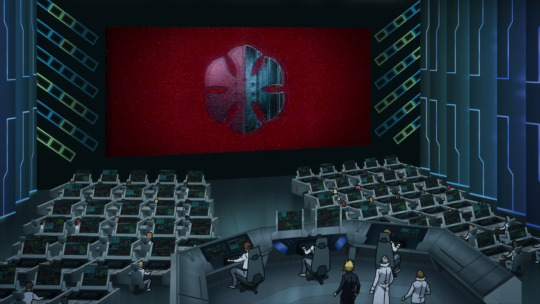
Comparison of Humarise (My Hero Academia) and Bliss Ocean (Epithet Erased)
Both Humarise from My Hero Academia: World Heroes' Mission and Bliss Ocean from Epithet Erased are fictional terrorist organizations with anti-superpower ideologies, but they differ significantly in their motivations, methods, structure, and narrative roles. Below is a detailed comparison based on the provided document, focusing on their ideologies, membership, goals, leadership, and outcomes.
1. Ideology and Motivation
Humarise (My Hero Academia)
Core Belief: Humarise views Quirks (superpowers) as a disease that threatens humanity's survival, referring to Quirk users as "diseased" or "infected" and Quirkless individuals as "pure humans." Their ideology is rooted in the Quirk Singularity Doomsday Theory, which posits that Quirks will grow uncontrollably powerful, leading to humanity's extinction.
Motivation: Driven by their leader Flect Turn’s personal struggles with his uncontrollable Reflect Quirk, Humarise believes that eradicating Quirks is the only way to save humanity. Their mission is framed as a sacred, almost religious crusade to "cleanse" the world of Quirks.
Hypocrisy: Despite their anti-Quirk stance, Humarise includes Quirk users, including Flect Turn, who either loathe their powers or join to avoid being targeted in the purge. Their actions also harm Quirkless individuals, contradicting their stated goal of protecting "pure humans."
Narrative Framing: Humarise is portrayed as a fanatical cult with a misguided, extremist ideology. Their belief in the Quirk Doomsday Theory is criticized as scientifically dubious, and their actions are driven by Flect’s personal trauma rather than objective reasoning.
Bliss Ocean (Epithet Erased)
Core Belief: Bliss Ocean seeks to eliminate epithets (unique superpowers) to create an equal society, viewing them as inherently unfair because they give epithet users an advantage over mundies (non-powered individuals). Their ideology emphasizes fairness and resentment toward the "superpower lottery."
Motivation: The organization is driven by the belief that hard work and skill are devalued by epithets, which allow some to dominate others effortlessly. Zora Salazar, a key member, embodies this frustration, as her epithet gives her overwhelming power, yet she seeks to fight fairly to prove her worth.
Hypocrisy: Like Humarise, Bliss Ocean employs epithet users (e.g., Zora, Yoomtah Zing) despite their anti-epithet stance, suggesting some members use their powers to further the organization’s goals while seeking to destroy epithets. Their actions, such as pursuing the Arsene Amulet, indicate a willingness to use power for their ends.
Narrative Framing: Bliss Ocean is a nebulous, shadowy organization with less explicit fanaticism than Humarise. Their motivations are tied to societal inequality rather than apocalyptic fears, making their ideology more grounded in social dynamics but still extreme in execution.
Comparison:
Similarities: Both groups oppose superpowers (Quirks/epithets), viewing them as detrimental to society, and both include powered individuals who paradoxically support the cause. Their ideologies are rooted in a sense of injustice—Humarise sees Quirks as a biological threat, while Bliss Ocean sees epithets as a social imbalance.
Differences: Humarise’s ideology is apocalyptic and pseudo-religious, driven by a fear of extinction, while Bliss Ocean’s is more secular, focused on leveling the playing field. Humarise’s goals are genocidal, aiming to kill 80% of the population, whereas Bliss Ocean’s methods (e.g., seeking the Arsene Amulet) suggest a less overtly murderous approach, though their ultimate plans remain unclear. Humarise’s hypocrisy is more explicit, as they endanger Quirkless people, while Bliss Ocean’s contradictions are subtler, tied to their use of epithet users.
2. Membership and Structure
Humarise
Composition: Primarily composed of Quirkless individuals, but includes Quirk users who either believe in the cause or join out of fear of being targeted. Members wear religious-style robes, masks, and scapulars with the organization’s six-pointed star emblem, emphasizing their cult-like nature.
Key Members:
Flect Turn: The founder and leader, a Quirk user with the Reflect Quirk, driven by personal trauma and a belief in the Quirk Doomsday Theory.
Beros: A loyal Quirk user with the Longbow Quirk, acting as Flect’s right-hand and a skilled sniper. She chooses death over capture, showing fanatical devotion.
Serpenters (Ena and Dio): Twin Quirk users with the Sword Kill Quirk, serving as elite enforcers. Their loyalty stems partly from fear of being purged.
Leviathan: A Trigger-enhanced brute with the Helical Scythe Quirk, acting as a berserker.
Sidero and Rogone: Lower-tier Quirk users with Iron Ball and Iron Club Quirks, respectively, serving as support or minor enforcers.
Structure: Humarise is a global cult with branches in 25 cities (e.g., Tokyo, Paris, New York). It has a hierarchical structure with Flect at the top, high-ranking Quirk users as enforcers, and Quirkless members as foot soldiers. They kidnap scientists to develop their Trigger Bombs, showing a reliance on coerced expertise.
Bliss Ocean
Composition: Composed of both mundies and epithet users, though their exact numbers and structure are less clear. The organization is more secretive, with members like Zora and Yoomtah operating covertly.
Key Members:
Bliss Ocean Leader: An enigmatic figure, only seen as a silhouette, implied to be highly powerful (defeated Zora in a one-sided fight). Their motivations and identity remain mysterious.
Zora Salazar: Rank 3 Corps Officer, a bounty hunter with a time-manipulating epithet (likely “Sundial”). She’s a skilled fighter who values fair duels but is sadistic and loyal to the cause.
Yoomtah Zing: An errand girl and “Robot Girl” with implied electricity-based powers, acting as a stealth operative.
Moot Tarbella: A hooded figure with the “Moot” epithet, confirmed as a trans woman and Indus’s calmer sibling. Her role is minor in Season 1.
Structure: Bliss Ocean operates from a headquarters in Sweet Jazz City and has a smaller, less defined presence than Humarise. It has four Corps Officers, with Zora as #3, suggesting a tight-knit, elite leadership. Their operations are more covert, focusing on specific objectives like acquiring the Arsene Amulet.
Comparison:
Similarities: Both organizations blend powered and non-powered members, with powered individuals in key roles despite their anti-superpower ideologies. They have hierarchical structures with charismatic leaders (Flect Turn, Bliss Ocean Leader) and loyal enforcers.
Differences: Humarise is a large, global cult with a clear religious aesthetic and widespread influence, while Bliss Ocean is smaller, more secretive, and less overtly fanatical. Humarise’s membership is broader, with coerced scientists and Quirkless foot soldiers, while Bliss Ocean relies on a smaller cadre of skilled operatives. Humarise’s members are more uniform in appearance, while Bliss Ocean’s members have distinct, individualized designs.
3. Goals and Methods
Humarise
Goal: Eradicate all Quirk users (approximately 80% of the global population) to prevent the Quirk Singularity Doomsday Theory, using Trigger Bombs to induce uncontrollable Quirk meltdowns.
Methods:
Develop Trigger Bombs, weapons designed to kill Quirk users by overloading their powers, through kidnapped scientists.
Deploy bombs in 25 cities, targeting major urban centers to maximize impact.
Orchestrate a global terrorist attack, luring heroes to bomb locations to eliminate them in the chaos.
Use propaganda, such as Flect’s broadcast, to instill fear and justify their actions.
Outcome: Their plan nearly succeeds, but is thwarted when Izuku Midoriya, Rody Soul, Katsuki Bakugo, and Shoto Todoroki use a deactivation key to disable the bombs. Humarise is dismantled, and its members, including Flect, are arrested.
Bliss Ocean
Goal: Eliminate epithets to create an equal society, likely using the Arsene Amulet, an artifact with the power to affect epithets (exact capabilities unclear).
Methods:
Pursue the Arsene Amulet, sending operatives like Yoomtah and Zora to retrieve it.
Operate covertly, with members like Zora engaging in targeted missions (e.g., duels, bounty hunting) rather than large-scale attacks.
Recruit skilled epithet users like Zora, leveraging their powers to achieve their goals while planning to eliminate epithets.
Outcome: Bliss Ocean’s efforts to secure the Arsene Amulet fail in the “Museum Arc” and “Western Arc,” with Zora losing a duel to Percy and Ramsey. The organization remains active, with its long-term plans unresolved by the end of Season 1.
Comparison:
Similarities: Both aim to eliminate superpowers (Quirks/epithets) through extreme measures, using artifacts or weapons (Trigger Bombs, Arsene Amulet) as central tools. Both are willing to harm innocents, though Humarise’s actions are more overtly destructive.
Differences: Humarise’s methods are genocidal, aiming for mass casualties via bombs, while Bliss Ocean’s approach is more targeted, focusing on acquiring a specific artifact. Humarise’s plan is immediate and catastrophic, while Bliss Ocean’s is slower and less defined, suggesting a long-term strategy. Humarise is defeated, while Bliss Ocean remains a threat.
4. Leadership
Humarise (Flect Turn)
Background: Flect Turn’s Reflect Quirk makes him nearly invulnerable but isolates him, as it repels physical and emotional connections. His inability to control his Quirk fuels his hatred for all Quirks, leading him to found Humarise.
Personality: Flect is a tragic, hypocritical villain who projects his personal suffering onto the world. He’s driven by self-loathing and a belief that Quirks are inherently evil, yet uses his own Quirk to lead. His refusal to train his Quirk or seek connection marks him as a “not-so-well-intentioned extremist.”
Fate: Defeated by Izuku Midoriya, who overwhelms his Quirk’s limits, and arrested by authorities, ending his leadership.
Bliss Ocean (Unnamed Leader)
Background: The leader is a mysterious silhouette with glowing eyes, implied to be powerful enough to defeat Zora in a one-sided fight. Their motivations are unclear, but they seek the Arsene Amulet to eliminate epithets.
Personality: Enigmatic and strategic, the leader operates from the shadows, communicating through screens or intermediaries. Their ability to recruit strong fighters like Zora suggests charisma or intimidation.
Fate: Remains active and unexposed by the end of Season 1, with their identity and full plans unknown.
Comparison:
Similarities: Both leaders are powerful figures who inspire loyalty (or fear) in their followers. Both use their organizations to address personal or ideological grievances against superpowers.
Differences: Flect’s motivations are deeply personal, tied to his Quirk-induced isolation, while the Bliss Ocean Leader’s are less clear, possibly rooted in a broader social critique. Flect is a visible, hands-on leader, while Bliss Ocean’s leader is distant and mysterious. Flect is defeated, while Bliss Ocean’s leader remains at large.
5. Narrative Role and Themes
Humarise
Role: The primary antagonist in My Hero Academia: World Heroes’ Mission, Humarise serves as a global threat that unites heroes worldwide. Their plan tests the resolve of heroes like Izuku, emphasizing themes of heroism, sacrifice, and overcoming personal trauma.
Themes:
Hypocrisy and Self-Loathing: Flect and his Quirk-using followers hate what they are, reflecting internal conflict.
Extremism vs. Heroism: Humarise’s fanatical ideology contrasts with the heroes’ commitment to protecting all people, Quirked or not.
Tragic Villainy: Flect’s backstory adds a layer of sympathy, though his actions are unjustifiable.
Resolution: Their defeat reinforces the narrative’s optimism, showing that unity and determination can overcome even the most catastrophic threats.
Bliss Ocean
Role: A recurring antagonistic force in Epithet Erased Season 1, Bliss Ocean drives conflict in the “Museum Arc” and “Western Arc” through their pursuit of the Arsene Amulet. They represent a looming threat with unresolved goals.
Themes:
Inequality and Resentment: Bliss Ocean highlights the tension between powered and non-powered individuals, exploring fairness and merit.
Moral Ambiguity: Members like Zora have complex motivations (e.g., her code of honor), making the organization less black-and-white than Humarise.
Mystery and Ambition: Bliss Ocean’s secretive nature and unclear endgame create suspense, contrasting with Humarise’s explicit plan.
Resolution: Their failure to secure the amulet leaves them active, setting up future conflicts and maintaining narrative tension.
Comparison:
Similarities: Both serve as major antagonists with anti-superpower agendas, creating high-stakes conflicts that challenge the protagonists. They explore themes of power, identity, and societal impact.
Differences: Humarise is a one-off threat with a clear, destructive goal, resolved within a single film. Bliss Ocean is an ongoing menace with vaguer objectives, fitting Epithet Erased’s serialized format. Humarise’s narrative is about stopping a catastrophe, while Bliss Ocean’s is about unraveling a mystery.
Conclusion
Humarise and Bliss Ocean share a core opposition to superpowers, driven by a mix of ideological zeal and personal grievances, and both employ powered individuals despite their anti-power stances. However, Humarise is a larger, more overtly destructive cult with a genocidal plan rooted in apocalyptic fears, resolved within a single narrative arc. Bliss Ocean is a smaller, more mysterious organization with a focus on societal inequality, serving as an ongoing threat with less immediate devastation. Humarise’s story is about stopping a clear catastrophe, while Bliss Ocean’s is about unraveling a complex, ongoing conflict, reflecting the differing tones and structures of My Hero Academia and Epithet Erased.
#epithet erased#zora salazar#bliss ocean#Epithet Erased comments#mha#erased#epithet#epitphet erased posts#epithet erased comments#theroies epithet#EpithetErased#ZoraSalazar#BlissOcean#EpithetErasedComments#MyHeroAcademia#EpithetErasedFan#EpithetErasedPosts#EpithetErasedFandom#EpithetErasedTheories#EpithetErasedAnalysis#EpithetErasedMeta#ZoraFan#BlissOceanVibes#EpithetErasedVillains#EpithetErasedAntagonists#EpithetErasedFanart#EpithetErasedCommunity#JelloApocalypse#EpithetErasedTheory#MHAxEpithetErased
4 notes
·
View notes
Text
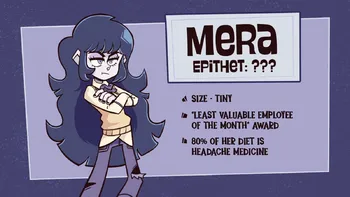

Differences (Foiling Aspects)
Epithet vs. Mundie Status:
Mera: Possesses the epithet "Fragile," which grants her powerful abilities to weaken objects and people to their breaking point but also causes her constant physical pain and frailty. Her epithet defines her motivations and struggles, making her a tragic villain driven by a desire to escape her suffering.
Wolf: A Mundie, meaning she lacks an epithet. This contrast highlights Mera’s reliance on her epithet for power (and its drawbacks), while Wolf operates without supernatural abilities, relying on physical means like a knife. Wolf’s Mundie status underscores her as a more grounded, street-level threat compared to Mera’s complex, epithet-driven villainy.
Foil Effect: Mera’s epithet makes her a formidable but tortured antagonist, while Wolf’s lack of an epithet positions her as a simpler, less sympathetic threat. This contrast emphasizes Mera’s internal conflict and the burden of her power against Wolf’s straightforward criminality.
Motivations and Morality:
Mera: A tragic villain with sympathetic motives. Her desire to steal the Arsene Amulet and Molly’s epithet stems from her need to alleviate the chronic pain caused by her epithet. Despite her ruthless actions (planning a museum heist, willingness to harm others), her suffering makes her an anti-villain with a complex moral grayness.
Wolf: A minor antagonist (described as an “alley mugger”) with no sympathetic backstory provided. Her actions—mugging Phoenica and threatening children with a knife—are purely self-serving and lack the depth of Mera’s motivations. She’s portrayed as a straightforward villain without the tragic elements.
Foil Effect: Mera’s sympathetic motivations contrast with Wolf’s apparent lack of redeeming qualities, highlighting Mera’s complexity as a character who does wrong for understandable reasons, while Wolf’s actions are more opportunistic and cruel.
Scale of Threat:
Mera: The arc villain of the “Museum Break In” arc, orchestrating a sophisticated heist to steal the Arsene Amulet. Her powers, strategic planning, and partnership with Indus make her a significant threat, with high stakes tied to her goal of altering her epithet-driven suffering.
Wolf: A minor, one-off antagonist in the Prison of Plastic prologue, whose threat is localized to a single mugging incident. Her impact is fleeting, and she’s easily scared off by Trixie, indicating a much lower level of danger.
Foil Effect: Mera’s role as a major, calculated villain contrasts with Wolf’s small-time, impulsive criminality, emphasizing Mera’s ambition and strategic depth against Wolf’s petty, immediate goals.
Physical and Narrative Presence:
Mera: A central character with a detailed backstory, physical description (pale purple skin, chipped iris, dark hair), and complex personality (sarcastic, cunning, yet vulnerable). Her narrative arc spans multiple episodes, with significant interactions with other key characters like Indus, Molly, and Giovanni.
Wolf: Lacks detailed physical or personality descriptions beyond her age (18), gender, and basic traits (likes marbles, arm wrestling, and jelly beans). Her narrative role is minimal, appearing only briefly as a mugger, with no deeper exploration of her character.
Foil Effect: Mera’s well-developed character contrasts with Wolf’s underdeveloped, almost archetypal “thug” role, highlighting Mera’s depth and emotional weight as a foil to Wolf’s simplistic antagonist archetype.
Response to Fear and Conflict:
Mera: Her epithet makes her immune to psychological attacks like Sylvie’s “Nightmare Fuel” because she’s already living her worst fear (constant pain). However, she has an absurd phobia of ducks, which is a minor, humorous contrast to her primary fear. Her resilience to pain and fear stems from years of training and adaptation.
Wolf: Easily frightened by Trixie, to the point of avoiding the alley where they met for years. This suggests a lack of resilience or cunning compared to Mera, who faces her fears head-on due to necessity.
Foil Effect: Mera’s strength in enduring her epithet’s pain contrasts with Wolf’s cowardice when confronted, highlighting Mera’s hardened resolve against Wolf’s vulnerability to intimidation.
Similarities
Antagonistic Roles:
Both Mera and Wolf are antagonists who engage in criminal behavior. Mera plans a museum heist to steal the Arsene Amulet, while Wolf attempts to mug Phoenica and threatens children with a knife. Their willingness to harm others for personal gain aligns them as villains, though Mera’s actions are on a grander scale.
Targeting Vulnerable Characters:
Both characters target younger or seemingly weaker individuals. Mera seeks to steal Molly’s epithet, exploiting a child’s power to alleviate her pain, while Wolf tries to mug Phoenica, a child, and threatens her and Molly. This shared trait of preying on the vulnerable underscores their antagonistic nature.
Moral Ambiguity (to a Lesser Extent for Wolf):
Mera is a clear tragic villain with sympathetic motivations tied to her chronic pain, but she’s also manipulative and ruthless. Wolf, while less developed, shows a hint of complexity in her attempt to bluff about having an epithet when threatened by Trixie, suggesting some degree of desperation or insecurity. Though Wolf’s motivations are not explored, both characters operate in morally gray areas to some extent.
Female Antagonists:
Both are female characters who serve as antagonists, contributing to the narrative’s conflict. This shared gender allows them to contrast with other female characters like Molly or Phoenica, who are more heroic or innocent.
Connection to Pain or Harm:
Mera’s epithet, “Fragile,” causes her constant pain and makes her prone to injury, shaping her worldview and actions. Wolf, while not explicitly tied to pain, uses a knife to threaten harm, indicating a readiness to inflict pain on others. Both characters are linked to the concept of pain, either enduring it (Mera) or causing it (Wolf).
Summary of Foil Relationship
Mera and Wolf serve as foils primarily through their contrasting roles as antagonists. Mera is a complex, tragic villain whose epithet-driven suffering and grand ambitions make her a central figure in the “Museum Break In” arc. Her powers, strategic mind, and sympathetic motivations elevate her as a nuanced character. In contrast, Wolf is a minor, underdeveloped antagonist whose Mundie status, petty criminality, and lack of depth make her a simpler threat. The foil dynamic highlights Mera’s emotional and narrative complexity against Wolf’s straightforward villainy.
Their similarities—both being female antagonists who target vulnerable characters and engage in morally questionable acts—tie them together thematically, but the differences in their motivations, scale of threat, and character development make Mera a more sympathetic and significant figure, while Wolf serves as a brief, less impactful antagonist. This contrast underscores Mera’s tragic depth and Wolf’s role as a disposable, street-level threat.
#epithet erased#zora salazar#bliss ocean#Epithet Erased comments#mha#erased#epithet#epitphet erased posts#epithet erased comments#theroies epithet#EpithetErased#ZoraSalazar#BlissOcean#EpithetErasedComments#MyHeroAcademia#EpithetErasedFan#EpithetErasedPosts#EpithetErasedFandom#EpithetErasedTheories#EpithetErasedAnalysis#EpithetErasedMeta#ZoraFan#BlissOceanVibes#EpithetErasedVillains#EpithetErasedAntagonists#EpithetErasedFanart#EpithetErasedCommunity#JelloApocalypse#EpithetErasedTheory#MHAxEpithetErased
6 notes
·
View notes
Text
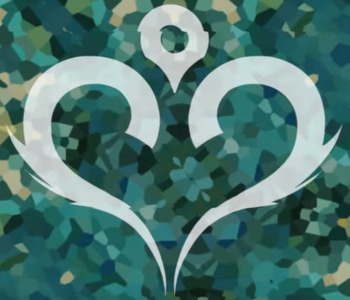
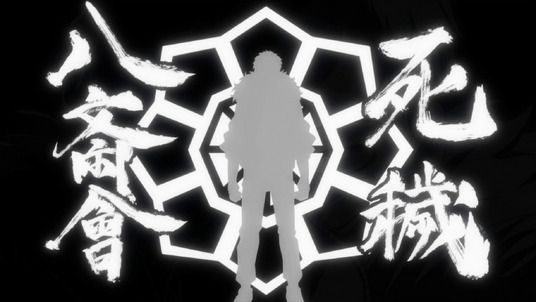
Comparison of Shie Hassaikai and Bliss Ocean
Overview
The Shie Hassaikai (My Hero Academia) and Bliss Ocean (Epithet Erased) are villainous organizations with the shared goal of eliminating superpowers—Quirks in the My Hero Academia universe and epithets in the Epithet Erased universe. Both groups aim to reshape their worlds by neutralizing these abilities, viewing them as societal imbalances. Additionally, Zora Salazar (Bliss Ocean) and Hari Kurono (Chronostasis, Shie Hassaikai) possess time-manipulating powers, inviting a comparison of their abilities and roles within their organizations. While their overarching objectives align, their motivations, methods, and operational scopes differ significantly, as do the specifics of Zora’s and Chronostasis’ powers.
Similarities
Goal of Erasing Superpowers
Shie Hassaikai: Led by Kai Chisaki (Overhaul), the organization seeks to eradicate Quirks, which Overhaul considers a "plague" on society. They develop Quirk-Destroying Bullets using Eri’s Rewind Quirk to remove Quirks, aiming to restore the Yakuza’s dominance by controlling the Quirk market (offering both destruction and restoration serums).
Bliss Ocean: A mundie-led terrorist group, Bliss Ocean aims to eliminate epithets to create an "equal society" where mundies (non-epithet users) are not disadvantaged. They pursue the Arsene Amulet, an artifact that steals epithets, to achieve this goal.
Shared Trait: Both organizations view superpowers (Quirks/epithets) as inherently unfair, seeking to neutralize them to restore a perceived natural order or gain power over society.
Time-Manipulating Subordinates
Hari Kurono (Chronostasis): Overhaul’s right-hand man, Chronostasis’ Quirk, "Chronostasis," allows him to slow the movements of targets hit by his clock-hand-like hair, with effects lasting based on the "hand" used (hour, minute, or second). He uses this to support Overhaul’s escape and combat operations.
Zora Salazar: A high-ranking Bliss Ocean member (Corps Officer #3), Zora’s epithet (Sundial, previously Crepuscule) enables her to manipulate linear time processes—speeding up, slowing, reversing, or pausing time (e.g., aging objects/people to dust or freezing bullets in time). She uses this to dominate fights and pursue the Arsene Amulet.
Shared Trait: Both wield time-based powers that provide tactical advantages, enhancing their organizations’ ability to execute plans through control over time-sensitive actions.
Villainous Ambition and Societal Disruption
Shie Hassaikai: Aims to dominate Japan’s underworld by monopolizing Quirk control, using Quirk-Destroying Bullets to weaken heroes and restore Yakuza power. Their actions (e.g., attacking Team Reservoir Dogs, supplying Trigger) destabilize hero society.
Bliss Ocean: Seeks to dismantle epithet-based hierarchies, targeting inscribed individuals to level the playing field for mundies. Their pursuit of the Arsene Amulet and terrorist actions (e.g., Zora’s bounty hunting) disrupt Sweet Jazz City’s stability.
Shared Trait: Both groups pursue systemic change through superpower elimination, leveraging their resources to challenge the status quo and assert control.
Differences
Motivations and Ideology
Shie Hassaikai:
Motivation: Overhaul’s personal vendetta against Quirks stems from his belief that they ruined the Yakuza’s prominence and his adoptive father’s (the Boss) life. His goal is to restore the Yakuza’s glory, using Quirk elimination as a means to control society and repay his debt to the Boss.
Ideology: Overhaul’s mysophobia and view of Quirks as a disease reflect a sociopathic desire for control and cleanliness. His plan is pragmatic, aiming to profit from both destroying and restoring Quirks, rather than purely ideological.
Scope: National, with ambitions to dominate Japan’s underworld and reshape hero society.
Bliss Ocean:
Motivation: Driven by a mundie-centric ideology, Bliss Ocean resents the inherent advantage epithets grant inscribed individuals. Their goal is an egalitarian society where hard work, not superpowers, determines success, as articulated by Zora’s disdain for epithet-driven superiority.
Ideology: Anti-magical and populist, Bliss Ocean’s hatred of epithets is rooted in fairness, though their terrorist methods (e.g., Zora’s sadistic bounty hunting) contradict their stated ideals. Their pursuit of the Arsene Amulet suggests a focus on neutralizing epithets entirely.
Scope: Localized to Sweet Jazz City (in Season 1), with broader implications unclear but potentially global given their nebulous structure.
Key Difference: Shie Hassaikai’s goal is rooted in Overhaul’s personal ambition and Yakuza restoration, with a profit-driven approach, while Bliss Ocean’s ideology is more egalitarian but hypocritical, driven by resentment and executed through terrorism.
Organizational Structure
Shie Hassaikai:
Structure: A traditional Yakuza group with a hierarchical setup, led by Overhaul (formerly the Boss), with Chronostasis as his aide, Mimic as general manager, and the Eight Bullets as elite enforcers. Lower-tier thugs are loyal to the old Boss, resentful of Overhaul’s villainous shift.
Resources: Limited due to the Yakuza’s decline post-All Might, relying on crimes (e.g., robberies, Trigger dealing) and Overhaul’s Quirk to sustain operations. Eri’s Rewind Quirk is their key asset.
Status: Disbanded after Overhaul’s defeat, with all key members arrested and their Quirk-Destroying Bullets stolen by the League of Villains.
Bliss Ocean:
Structure: A nebulous terrorist organization led by an enigmatic Leader, with four Corps Officers (e.g., Zora, #3), Yoomtah Zing as an errand girl, and Moot Tarbella as a cloaked member. Its full scope and membership are unclear.
Resources: Operates covertly, with members like Zora leveraging high skill and epithets (despite their anti-epithet stance). The Arsene Amulet is their primary target, not a current asset.
Status: Active, with ongoing operations post-Season 1, though their plans are disrupted by Zora’s failure to secure the Amulet.
Key Difference: Shie Hassaikai is a structured, declining Yakuza group with a clear hierarchy but limited resources, while Bliss Ocean is a shadowy, flexible terrorist group with high-potential members but less defined operations.
Time-Based Powers: Zora vs. Chronostasis
Hari Kurono (Chronostasis):
Quirk: Chronostasis slows the movements of targets hit by his prehensile, clock-hand-like hair. The effect’s duration varies by hand (hour: longest, second: shortest). He must remain still to extend his hair, limiting mobility.
Application: Tactical support, slowing enemies to aid Overhaul’s escapes or attacks (e.g., targeting Eraser Head during the raid). Its effect is localized to individuals and requires physical contact.
Limitations: Requires immobility to activate, has a short range (hair length), and only slows, not stops, time. It lacks offensive or transformative capabilities.
Role: Chronostasis is Overhaul’s loyal assistant, using his Quirk to execute Overhaul’s plans, with no personal ambition beyond loyalty to the Hassaikai.
Zora Salazar:
Epithet: Sundial (formerly Crepuscule) manipulates linear time processes—speeding, slowing, reversing, or pausing (e.g., aging objects/people to dust, freezing bullets). She can imbue her epithet into objects (e.g., bullets for Rapid Aging).
Application: Highly versatile, used for offense (aging targets), defense (healing wounds carefully), and utility (shortening time, teleport-like movement). Her high stats (Nova-tier Stamina, Proficiency, Creativity) make her a dominant fighter.
Limitations: Cannot affect non-linear or instantaneous processes (e.g., broken objects, gold’s non-corrosive state). Requires precision (e.g., healing risks infection if mishandled). Her honor code sometimes limits her full power.
Role: A Corps Officer and bounty hunter, Zora pursues the Arsene Amulet for Bliss Ocean but is driven by thrill-seeking and personal ideology, showing independence from her Leader.
Key Difference: Chronostasis’ Quirk is a narrowly focused, support-oriented ability with limited scope, tied to his role as Overhaul’s subordinate. Zora’s Sundial is a versatile, high-impact power with offensive, defensive, and utility applications, reflecting her status as a top-tier operative with personal agency.
Narrative Role and Impact
Shie Hassaikai:
Role: The central antagonists of the Shie Hassaikai Arc, their Quirk-elimination plan threatens hero society. Overhaul’s actions (e.g., torturing Eri, killing Sir Nighteye) drive the arc’s emotional stakes, culminating in a large-scale hero raid.
Impact: Their defeat marks a turning point, weakening the Yakuza and empowering the League of Villains (who steal the Quirk-Destroying Bullets). Overhaul’s fall highlights the fragility of his ambition and the heroes’ resilience.
Scope: National, with ripple effects on hero society and the villain landscape (e.g., Shigaraki’s rise).
Bliss Ocean:
Role: The overarching antagonists of Epithet Erased Season 1, their pursuit of the Arsene Amulet drives the Museum and Western Arcs. Zora’s actions and the Leader’s shadowy presence set up future conflicts.
Impact: Their failures (e.g., Zora losing to Percy and Ramsey) keep their plans in check, but their active status and mysterious Leader suggest ongoing threats. Their actions are confined to Sweet Jazz City but hint at larger ambitions.
Scope: Localized but potentially global, given their nebulous structure and anti-epithet mission.
Key Difference: Shie Hassaikai’s arc is a self-contained, high-stakes conflict with immediate societal impact, while Bliss Ocean’s role is ongoing, with a broader but less defined threat, building suspense for future arcs.
Conclusion
The Shie Hassaikai and Bliss Ocean share the goal of erasing superpowers (Quirks and epithets) to reshape their worlds, driven by resentment against societal imbalances. Both employ time-manipulating subordinates—Chronostasis and Zora—to further their plans. However, Shie Hassaikai’s Yakuza-rooted, profit-driven approach contrasts with Bliss Ocean’s terrorist, egalitarian ideology. Chronostasis’ limited, support-focused Quirk pales against Zora’s versatile, destructive Sundial epithet, reflecting their differing roles as loyal aide versus independent operative. Narratively, Shie Hassaikai’s defeat marks a resolved arc, while Bliss Ocean’s ongoing threat sets up future conflicts, highlighting their distinct scales and storytelling functions.
#epithet erased#zora salazar#bliss ocean#Epithet Erased comments#mha#erased#epithet#epitphet erased posts#epithet erased comments#theroies epithet#EpithetErased#ZoraSalazar#BlissOcean#EpithetErasedComments#MyHeroAcademia#EpithetErasedFan#EpithetErasedPosts#EpithetErasedFandom#EpithetErasedTheories#EpithetErasedAnalysis#EpithetErasedMeta#ZoraFan#BlissOceanVibes#EpithetErasedVillains#EpithetErasedAntagonists#EpithetErasedFanart#EpithetErasedCommunity#JelloApocalypse#EpithetErasedTheory#MHAxEpithetErased
3 notes
·
View notes
Text

Bliss Ocean is a mundie terrorist group in Sweet Jazz City that harbors a deep hatred for Inscribed individuals. Their core motivation stems from a desire for an "equal society" where epithets are eliminated. They believe that epithets grant an unfair advantage, negating the efforts of mundies who train extensively. This mirrors a common theme in
My Hero Academia where the existence of Quirks creates societal divides and debates about fairness and equality, although My Hero Academia generally explores this through the lens of hero society and villain motivations rather than outright "mundie" terrorism.
Motives:
Elimination of Epithets: Bliss Ocean's primary goal is to "get rid of epithets for an equal society". They seek the Arsene Amulet for this purpose. This is akin to certain My Hero Academia villains, like some members of the Shie Hassaikai (specifically Overhaul), who sought to eradicate Quirks, albeit for different underlying reasons.
"Hard Work Hardly Works" Philosophy: They are driven by the belief that a mundie's lifelong dedication and training can be easily overshadowed by someone simply born with a superpower. This resonates with the anxieties and frustrations expressed by some Quirkless individuals or those with "weak" Quirks in My Hero Academia, who might feel marginalized or resentful of the inherent advantages others possess.
Equal Society: While their methods are extreme, their stated aim is to create a society where everyone is on an equal footing. This is a distorted version of social justice, a theme frequently touched upon in My Hero Academia regarding the distribution and impact of powers.
Organization and Members:
Bliss Ocean is an active organization led by an enigmatic, unnamed leader. They have a hierarchical structure with four "Corps Officers," though currently, only Zora Salazar (Rank 3) is known.
Bliss Ocean Leader: The leader is a mysterious figure, often appearing as a silhouette. They are the "Big Bad" of Season 1, pulling the strings behind the search for the Arsene Amulet. Their ability to recruit powerful individuals like Zora, even after a "one-sided fight," suggests immense personal power or persuasive ability. This shadowy, powerful leader archetype is common in My Hero Academia, exemplified by characters like All For One, who orchestrates villainous activities from behind the scenes and recruits powerful individuals.
Zora Salazar (Rank 3): Zora is a bounty-hunting cowgirl and a Corps Officer. Despite being Inscribed herself, she holds a "Boomerang Bigot" mentality, hating epithets because she believes they give an unfair advantage.
Skills: Zora possesses an incredibly powerful epithet, "Sundial," which allows her to manipulate linear time processes like aging, speeding up, slowing down, reversing, or pausing them. She can imbue her bullets with this effect, causing rapid aging from a distance. Her stats are in the highest "Nova" tier, making her one of the most powerful characters in Season 1. She's also a highly skilled marksman and tracker.
Similarities to MHA characters: Zora's combat prowess and "Story-Breaker Power" are reminiscent of high-tier My Hero Academia villains or even Pro Heroes who possess incredibly strong Quirks. Her "Honor Before Reason" and tendency to toy with opponents despite her overwhelming power could be compared to characters like Muscular, who revels in overpowering his opponents, or even some arrogant Pro Heroes who enjoy demonstrating their strength. Her internal conflict as an Inscribed who hates epithets offers a nuanced perspective, similar to how some My Hero Academia characters grapple with their Quirks or the implications of a Quirk-powered society.
Yoomtah Zing (Errand girl): Referred to as "Robot Girl" in the credits, Yoomtah is an errand girl and a "Cloaked Member". She is a mundie, despite her Max rank stats. She exhibits electrical powers and is a stealth expert. Her role as a seemingly innocuous yet powerful individual with hidden capabilities mirrors characters like Himiko Toga, who can appear harmless but possesses significant combat skills.
Moot Tarbella (The Hooded Figure): Moot is a mysterious hooded member and Indus Tarbella's sister. Confirmed to be a trans woman, she is described as calm and collected, in contrast to her bombastic brother, but also has an aggressive side. Her mysterious nature and hidden power are common tropes in My Hero Academia for villains with unknown Quirks or intentions.
Overall Analysis and Similarities to MHA:
Bliss Ocean, like many villain organizations in My Hero Academia, represents a radical response to a societal power imbalance (Inscribed vs. Mundies/Quirks vs. Quirkless).
Anti-Power Ideology: Their fundamental opposition to epithets (powers) echoes the sentiment of some characters in My Hero Academia who question or resent the prevalence of Quirks, particularly those who are Quirkless or feel disadvantaged.
Terrorist Methods: Their designation as a "terrorist group" and their willingness to cause "general nuisance" and more severe actions (like Zora's destruction) align with the tactics of villain organizations in My Hero Academia that resort to violence and disruption to achieve their goals.
Charismatic/Enigmatic Leader: The Bliss Ocean Leader, like All For One, operates from the shadows, recruiting powerful individuals and directing the organization's efforts.
Diverse Member Skillsets: The presence of both powerful Inscribed members like Zora and powerful Mundie members like Yoomtah within Bliss Ocean reflects the diverse range of abilities and backgrounds found within villain groups in My Hero Academia.
Quest for a MacGuffin: Their pursuit of the Arsene Amulet, an object believed to eliminate epithets, is a common plot device in My Hero Academia, where villains often seek specific items or abilities (like One For All, or components for Quirk-erasing bullets) to further their agenda.
"Nebulous Evil Organization": The fact that "Not many details about them are known" and their leader is shrouded in mystery is a classic villain trope also utilized in My Hero Academia to build suspense around the larger antagonist forces.
In summary, Bliss Ocean's motivations, organizational structure, and the nature of its members, while specific to the Epithet Erased universe, share significant thematic and narrative parallels with the villain groups and individual antagonists found within My Hero Academia. Both series explore the societal impact of superpowers and the extreme measures individuals or groups might take in response.
(Basically see my Humarise posts on them)
#epithet erased#zora salazar#bliss ocean#Epithet Erased comments#mha#erased#epithet#epitphet erased posts#epithet erased comments#theroies epithet#EpithetErased#ZoraSalazar#BlissOcean#EpithetErasedComments#MyHeroAcademia#EpithetErasedFan#EpithetErasedPosts#EpithetErasedFandom#EpithetErasedTheories#EpithetErasedAnalysis#EpithetErasedMeta#ZoraFan#BlissOceanVibes#EpithetErasedVillains#EpithetErasedAntagonists#EpithetErasedFanart#EpithetErasedCommunity#JelloApocalypse#EpithetErasedTheory#MHAxEpithetErased
4 notes
·
View notes
Text
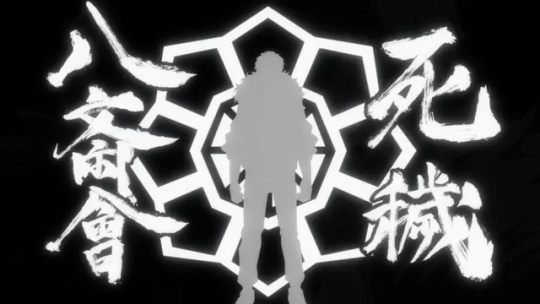
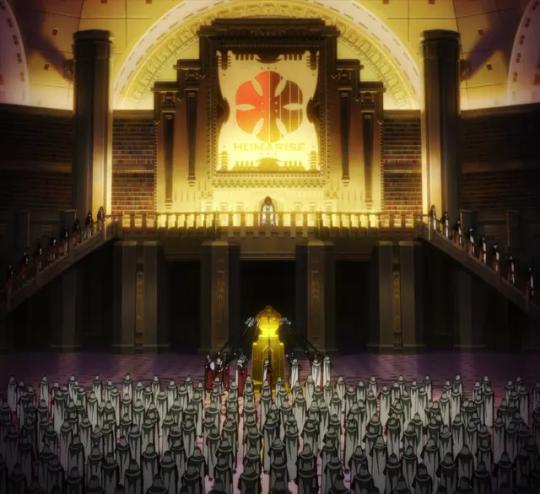
Analysis of the Foil Between Shie Hassaikai and Humarise
This analysis examines the foil relationship between Shie Hassaikai and Humarise, two antagonistic organizations from My Hero Academia that share the goal of eliminating quirks but differ in their motivations, methods, and hypocritical practices. By exploring these aspects, this analysis highlights how they contrast while reinforcing similar themes of power, control, and extremism.
Shared Goal: Elimination of Quirks
Both Shie Hassaikai and Humarise aim to eradicate quirks, viewing them as detrimental to society, but their motivations diverge:
Shie Hassaikai: Led by Kai Chisaki (Overhaul), this Yakuza organization sees quirks as a "plague" that has diminished their traditional criminal power. Their goal is to destroy quirks to restore the Yakuza’s dominance, using the proceeds to control both sides of the law through a quirk-destroying and quirk-restoring drug market (Shie Hassaikai).
Humarise: A global cult, Humarise believes quirks are a curse, a mutation that corrupts humanity. Their objective is to "purify" the world by eliminating quirk users entirely, viewing them as a threat to human purity (Humarise).
Analysis: The shared goal of quirk elimination unites them, but their ideologies reflect different critiques. Shie Hassaikai’s motivation is pragmatic and self-serving, rooted in restoring their criminal empire, while Humarise’s is fanatical and ideological, driven by a pseudo-religious belief in humanity’s purification. This contrast sets the stage for their foil, highlighting economic versus spiritual rationales for the same objective.
Methods and Operational Strategies
Their approaches to achieving quirk elimination differ significantly, reflecting their organizational structures:
Shie Hassaikai: Operates as a hierarchical Yakuza group, developing Quirk-Destroying Drugs by harvesting Eri’s "Rewind" quirk to create "Quirk-Killer Bullets." They plan to sell these alongside quirk-restoring serums, aiming to monopolize the quirk market. Their operations include low-profile criminal activities like theft and supplying Trigger (a quirk-enhancing drug) to fund their plans (Shie Hassaikai).
Humarise: Functions as a global cult, using Trigger Bombs to force quirk users to overuse their powers until their bodies fail, causing mass destruction. Their method is indiscriminate, targeting entire populations to achieve a global purge of quirk users (Humarise).
Analysis: Shie Hassaikai’s methodical, profit-driven approach contrasts with Humarise’s chaotic, destructive strategy. The Yakuza’s drug development requires precision and secrecy, aligning with their structured criminal roots, while Humarise’s bombs reflect their cult-like zeal for immediate, widespread impact. This foil underscores their differing scopes—regional control versus global annihilation—and highlights their narrative roles as a disciplined syndicate versus an apocalyptic cult.
Hypocrisy and Contradictions
Both organizations exhibit hypocrisy by relying on the very quirks they seek to eliminate:
Shie Hassaikai: Overhaul’s extensive use of his "Overhaul" quirk—disassembling and reassembling matter—contradicts his claim that quirks are a disease. He employs it for combat, healing, and fusing with subordinates (e.g., Shin Nemoto and Rikiya Katsukame) to enhance his power, while exploiting Eri’s quirk for his drug production. His actions reveal a reliance on quirks to achieve his anti-quirk goals (Shie Hassaikai).
Humarise: While less explicit due to limited source details, their use of Trigger Bombs likely involves quirk-related technology or knowledge, contradicting their anti-quirk ideology. The bombs manipulate quirks to cause harm, suggesting a dependence on the systems they oppose (Humarise).
Analysis: The hypocrisy forms a core element of their foil. Shie Hassaikai’s contradiction is overt and personal, with Overhaul’s quirk use central to his operations, reflecting his pragmatic willingness to compromise his ideals for power. Humarise’s hypocrisy is subtler, implied through their reliance on quirk-manipulating technology, which aligns with their cult-like denial of internal contradictions. This contrast highlights different flavors of hypocrisy: Shie Hassaikai’s is blatant and self-serving, while Humarise’s is systemic and cloaked in ideology.
Narrative Foil Dynamics
The foil between Shie Hassaikai and Humarise lies in their contrasting approaches to a shared goal, creating narrative tension:
Ideology: Shie Hassaikai’s criminal ambition contrasts with Humarise’s fanatical purification. Overhaul’s goal is to restore a past power structure, while Humarise seeks a radical new world order, making their motivations grounded versus apocalyptic.
Methods: Shie Hassaikai’s drug-based strategy is calculated and long-term, aiming for control through market manipulation, while Humarise’s bomb-based approach is immediate and destructive, prioritizing chaos over control. This reflects their organizational identities: a Yakuza syndicate versus a global cult.
Leadership: Overhaul is a hands-on, ruthless mob boss who personally drives his organization’s actions, while Humarise’s leader (less detailed in sources) appears as a shadowy figurehead, embodying the cult’s mystique. This contrasts a visible, strategic leader with a distant, ideological one.
Hypocrisy: Shie Hassaikai’s overt reliance on Overhaul’s quirk contrasts with Humarise’s subtler technological dependence, highlighting personal versus systemic contradictions.
Thematic Reinforcement: The foil amplifies themes of power and control. Shie Hassaikai critiques the erosion of traditional power structures in a quirk-dominated world, while Humarise critiques the existence of quirks as a moral failing. Their hypocrisy—using quirks to fight quirks—underscores the irony of their dependence on the systems they oppose, reflecting the broader challenge of dismantling power structures while wielding power.
Key Contrasts and Similarities
The following bullet points summarize their foil:
Contrasts:
Scope: Shie Hassaikai operates regionally, focusing on Japan’s underworld, while Humarise targets the global population.
Methods: Shie Hassaikai’s Quirk-Destroying Drugs aim for market control, while Humarise’s Trigger Bombs seek mass destruction.
Leadership Style: Overhaul’s direct, authoritarian control contrasts with Humarise’s enigmatic, cult-like leadership.
Hypocrisy: Shie Hassaikai’s is explicit through Overhaul’s quirk use, while Humarise’s is implied through their technology.
Similarities:
Anti-Quirk Ideology: Both view quirks as societal ills, whether as a plague or a curse.
Hypocrisy: Both rely on quirk-related means (Overhaul’s quirk, Humarise’s bombs) to achieve anti-quirk goals.
Extremism: Both employ extreme measures—human experimentation for Shie Hassaikai, terrorism for Humarise—reflecting radical commitment.
Narrative Significance
As foils, Shie Hassaikai and Humarise enrich My Hero Academia’s exploration of quirk-related societal tensions:
Shie Hassaikai: Represents the corruption of traditional criminal structures when confronted with quirk-driven changes. Overhaul’s downfall, driven by his hypocrisy and poor decisions (e.g., alienating the League of Villains), highlights the self-destructive nature of compromised ideals (Shie Hassaikai).
Humarise: Embodies the danger of fanatical ideology, showing how a cult can threaten global stability. Their indiscriminate methods contrast with Shie Hassaikai’s precision, emphasizing the chaos of unchecked zeal (Humarise).
Their foil relationship underscores the narrative’s critique of extremism: both groups’ reliance on quirks to eliminate quirks reveals the futility of their goals, as they cannot escape the systems they seek to destroy.
Conclusion
Shie Hassaikai and Humarise form a compelling foil through their shared goal of quirk elimination, contrasted by their motivations (criminal restoration vs. spiritual purification), methods (drugs vs. bombs), and hypocrisies (personal quirk use vs. systemic technology reliance). Shie Hassaikai’s pragmatic Yakuza structure clashes with Humarise’s chaotic cult, creating a dynamic interplay that highlights themes of power, control, and the contradictions of extremism. Their foil enriches My Hero Academia’s narrative, presenting two sides of the same flawed crusade against quirks.
#epithet erased#zora salazar#bliss ocean#Epithet Erased comments#mha#erased#epithet#epitphet erased posts#epithet erased comments#theroies epithet#EpithetErased#ZoraSalazar#BlissOcean#EpithetErasedComments#MyHeroAcademia#EpithetErasedFan#EpithetErasedPosts#EpithetErasedFandom#EpithetErasedTheories#EpithetErasedAnalysis#EpithetErasedMeta#ZoraFan#BlissOceanVibes#EpithetErasedVillains#EpithetErasedAntagonists#EpithetErasedFanart#EpithetErasedCommunity#JelloApocalypse#EpithetErasedTheory#MHAxEpithetErased
1 note
·
View note
Text
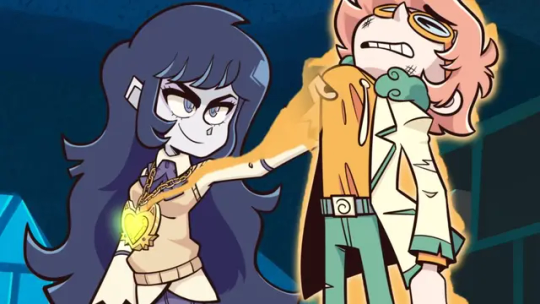

Comparison of All For One Quirk and Arsene Amulet
Overview
The All For One Quirk (My Hero Academia) and the Arsene Amulet (Epithet Erased) are abilities that allow their users to steal and wield the powers of others. All For One is a biological Quirk inherent to its user, enabling the theft and transfer of Quirks via physical touch. The Arsene Amulet is a magical artifact imbued with the "Copycat" epithet, granting its wearer the ability to steal and use others' epithets. While both share the core concept of power appropriation, their mechanics, limitations, and narrative roles differ significantly.
Similarities
Power Theft Mechanism
All For One: Allows the user to steal Quirks by touching a target through a hole in their palm, rendering the victim Quirkless and temporarily disoriented. Stolen Quirks can be used by the user or transferred to others.
Arsene Amulet: Enables the wearer to steal epithets from others, summoning their abilities (e.g., Mera stealing Sylvie’s Nightmare Fuel). The exact mechanism is not detailed, but it involves direct use by the wearer.
Shared Trait: Both steal supernatural abilities (Quirks or epithets) from others, leaving victims powerless and allowing the user to wield these powers.
Versatility in Power Usage
All For One: Users can wield multiple Quirks simultaneously, combining them for enhanced effects (e.g., All For One’s Ultimate Quirk Combination with Springlike Limbs, Multiplier, etc.). Quirks can be tailored to overcome weaknesses or amplify strengths.
Arsene Amulet: The wearer can use stolen epithets’ abilities, such as summoning specific powers (e.g., Nightmare Fuel). While not explicitly shown combining epithets, its versatility lies in accessing varied abilities based on the stolen epithet.
Shared Trait: Both grant access to a diverse array of powers, enabling flexible combat and strategic applications.
Psychological and Strategic Impact
All For One: Its user, particularly All For One (the character), leverages stolen Quirks to dominate society, create Nomus, and instill fear. The Quirk’s mental link with past users (e.g., All For One’s Vestige influencing Tomura) adds a psychological dimension.
Arsene Amulet: Its theft of epithets creates fear and chaos, as seen when Mera uses it to intimidate Molly. Its value as a priceless artifact drives conflict among characters like Giovanni, Zora, and the Sweet Jazz Police.
Shared Trait: Both abilities are tools for control and disruption, amplifying their users’ influence through fear, power accumulation, and strategic manipulation.
Differences
Nature and Origin
All For One:
Type: Biological Quirk, inherent to the user’s physiology, manifested at birth (e.g., Zen Shigaraki stealing his mother’s Quirk as a newborn).
Origin: A natural Meta Ability in the My Hero Academia world, tied to the user’s body and Quirk Factor in their hands.
Transferability: Can be duplicated (e.g., by Kyudai Garaki) and transferred to others (e.g., Tomura Shigaraki), with the original user retaining a copy.
Arsene Amulet:
Type: Magical artifact, a golden pendant with a green heart-shaped crystal, imbued with the "Copycat" epithet.
Origin: Created by Cinnamon Josh, an inscribed thief, to preserve his epithet-stealing ability against aging, later stored in the Sweet Jazz City Museum.
Transferability: Not inherent to a person; it must be physically possessed and worn to function, passing between users like Mera, Giovanni, and Zora.
Key Difference: All For One is a biological trait tied to the user’s body, while the Arsene Amulet is an external object, making it more accessible but less integrated with the user.
Mechanics and Limitations
All For One:
Mechanics: Requires physical touch to steal or transfer Quirks. Stolen Quirks become part of the user’s arsenal, with no fixed limit (though excessive Quirks strain the body). Can combine Quirks for unique effects or mitigate drawbacks.
Limitations:
Body Strain: Multiple Quirks can overwhelm the user’s body, potentially rendering them mindless (e.g., Nomus) or causing physical breakdown (e.g., Tomura’s incomplete body at 75% capacity).
Quirk Compatibility: Some Quirks (e.g., Best Jeanist’s Fiber Master) require training All For One lacks, and stolen Quirks may be weakened (e.g., Hawks’ Fierce Wings as stubs).
One For All Resistance: Cannot steal One For All without the wielder’s consent, though negative emotions can override this (e.g., Tomura’s grooming).
Vestige Influence: The original user’s consciousness can dominate the inheritor (e.g., All For One’s Vestige controlling Tomura).
Unique Traits: Grants a mental world where Vestiges of past users interact, and stolen Quirks retain donor consciousness.
Arsene Amulet:
Mechanics: Steals epithets, allowing the wearer to summon their abilities (e.g., Mera using Sylvie’s Nightmare Fuel). The process is less detailed but implied to be immediate upon use.
Limitations:
Storage Limit: Unclear exact limit, but Nine’s weaker All For One variant suggests a cap (e.g., eight Quirks), implying the Amulet may have a similar constraint.
Physical Possession: Must be worn to function, making it vulnerable to theft (e.g., Giovanni taking it from Mera, Zora from Bugsy).
Epithet Dependency: Effectiveness depends on the stolen epithet’s power and the wearer’s skill, with no mention of combining epithets.
No Vestige Influence: Lacks the mental world or consciousness transfer of All For One, limiting psychological complexity.
Unique Traits: Its cat-like design reflects Cinnamon Josh’s "Copycat" epithet, and its status as a priceless artifact drives narrative conflict.
Key Difference: All For One’s biological integration allows limitless Quirk accumulation (with strain) and complex interactions (Vestiges), while the Amulet’s external nature limits it to the wearer’s possession and likely fewer powers, with simpler mechanics.
Narrative Role and Impact
All For One:
Role: Central to My Hero Academia’s conflict, embodying All For One’s (the character’s) quest for global domination by controlling Quirks. It drives the creation of Nomus, Tomura’s transformation, and the battle against One For All.
Impact: Reshapes hero society by empowering villains and destabilizing trust (e.g., through Tomura’s actions). Its psychological stakes (Vestige conflicts) and physical toll (e.g., Tomura’s body failing) deepen the narrative’s exploration of power and identity.
Scope: Global, aiming to make Quirks the sole societal currency, with All For One as the ultimate arbiter.
Arsene Amulet:
Role: A plot device in Epithet Erased, driving conflict in the Museum and Western Arcs. Its theft by characters like Mera, Giovanni, and Zora fuels personal rivalries and organizational goals (e.g., Bliss Ocean’s pursuit).
Impact: Localized, creating chaos within Sweet Jazz City and Redwood Run. It amplifies individual power (e.g., Mera’s theft of Sylvie’s epithet) but lacks the systemic ambition of All For One.
Scope: Confined to specific arcs, with its value as a priceless artifact motivating character actions rather than societal upheaval.
Key Difference: All For One is a world-altering force tied to a villain’s grand ambition, while the Arsene Amulet is a narrative catalyst for smaller-scale conflicts, emphasizing personal gain over systemic change.
Conclusion
The All For One Quirk and Arsene Amulet share the ability to steal and wield others’ powers, offering versatility and strategic dominance. However, All For One’s biological nature, limitless potential, and psychological complexity (Vestiges) contrast with the Amulet’s external, artifact-based mechanics and simpler, possession-dependent functionality. All For One drives My Hero Academia’s overarching conflict with global stakes, while the Amulet fuels localized, character-driven drama in Epithet Erased. Their differences reflect their respective universes: My Hero Academia’s focus on systemic power struggles versus Epithet Erased’s emphasis on personal and episodic conflicts.
#epithet erased#zora salazar#bliss ocean#Epithet Erased comments#mha#erased#epithet#epitphet erased posts#epithet erased comments#theroies epithet#EpithetErased#ZoraSalazar#BlissOcean#EpithetErasedComments#MyHeroAcademia#EpithetErasedFan#EpithetErasedPosts#EpithetErasedFandom#EpithetErasedTheories#EpithetErasedAnalysis#EpithetErasedMeta#ZoraFan#BlissOceanVibes#EpithetErasedVillains#EpithetErasedAntagonists#EpithetErasedFanart#EpithetErasedCommunity#JelloApocalypse#EpithetErasedTheory#MHAxEpithetErased
1 note
·
View note